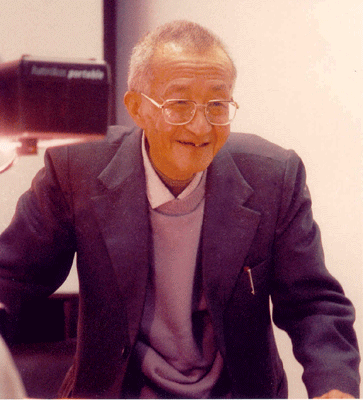<Back to Index>
- Mathematician Feng Kang, 1920
- Writer Cesare Pavese, 1908
- Governor of the Province of Massachusetts Bay Thomas Hutchinson, 1711
PAGE SPONSOR

Feng Kang (simplified Chinese: 冯康; traditional Chinese: 馮康) (September 9, 1920 - August 17, 1993) was a Chinese mathematician and scientist.
He was born in Nanjing, China and spent his childhood in Suzhou, Jiangsu. He studied at Suzhou Middle School. In 1939 he was admitted to the Department of Electrical Engineering of the National Central University (which moved to Chongqing during 1937 - 1945 and changed the name to Nanjing University in 1949 and reinstated in Taiwan in 1962) and two years later he transferred to the Department of Physics where he studied until his graduation in 1944. He got interested in mathematics and studied it at the university.
After graduation he contracted vertebral tuberculosis and continued to learn mathematics by himself at home. Later in 1946 he went to teach mathematics at Tsinghua University.
In 1951 he was appointed as assistant professor at the Institute of
Mathematics of the Chinese Academy of Sciences. From 1951 to 1953 he
worked at Steklov Mathematical Institute in Moscow, under the supervision of Professor Lev Pontryagin. In 1957 he was elected as an associate professor at the Institute of Computer Technology of the Chinese Academy of Sciences,
where he began his work on computational mathematics and became the
founder and leader of computational mathematics and scientific
computing in China. In 1978 he was appointed as the first Director of
the newly founded Computing Center of the Chinese Academy of Sciences
until 1987 when he became the Honorary Director. Feng Kang's scientific contributions range across many fields. Before 1957 he mainly worked on pure mathematics, specially on topological groups, Lie groups and generalized function theory. From 1957 he changed to applied mathematics and computational mathematics.
Because of his sound and broad knowledge in mathematics and physics, he
made a series of pioneer researches in computational mathematics. In
the later 1950s and early 1960s, based on the computations of dam
constructions, Professor Feng proposed a systematic numerical method
for solving partial differential equations. The method was called Finite difference method based on variation principle (基于变分原理的差分方法). This method was also independently invented in the West, called there the finite element method.
It is now considered that the invention of the finite element method is
a milestone of computational mathematics. In the 1970s Professor Feng
gave embedding theories in the discontinuous finite element space, and
generalized classical theory on elliptic equations to various dimensional combinations, which provided a mathematical foundation for elastic composite structures. Also
in the 1970s, he made great efforts and contributions in reducing
elliptic equations to boundary integral equations. He gave a natural boundary element method,
which is now regarded as one of three main boundary element methods.
From 1978 he had given lectures and seminars on finite elements and
natural boundary elements in more than ten universities and institutes in France, Italy, Japan and the USA. From 1984 Professor Feng changed his research field from elliptic equations to dynamical systems such as Hamiltonian systems and wave equations. He proposed symplectic algorithms for Hamiltonian systems based on symplectic geometry. Such algorithms can preserve the symplectic geometric structure of Hamiltonian systems. He
then led and supervised a research group on the symplectic algorithms
for Hamiltonian systems with finite and infinite dimensions, and on
dynamical systems with Lie algebraic structures, such as contact systems, source - free systems,
etc., making use of the corresponding geometry and the underlying Lie
algebras and Lie groups. These algorithms are overwhelmingly superior
to conventional algorithms in long term tracking and qualitative
simulation in many practical applications, such as celestial mechanics, molecular dynamics, etc.